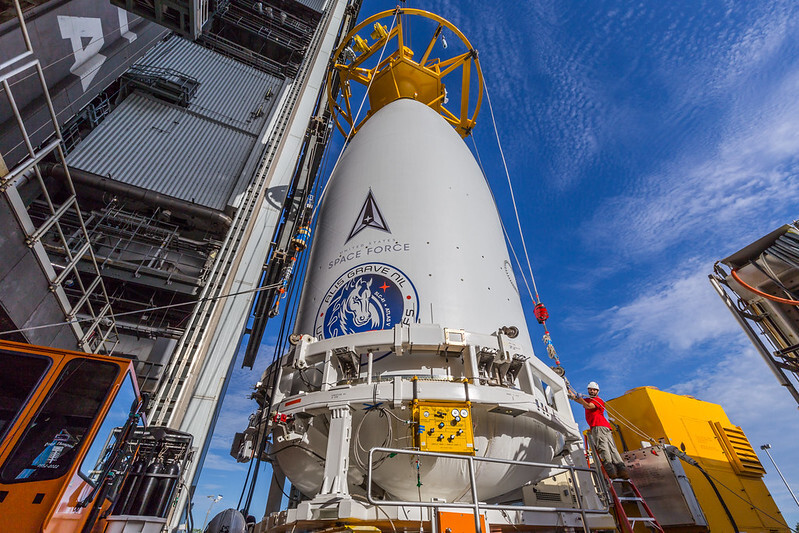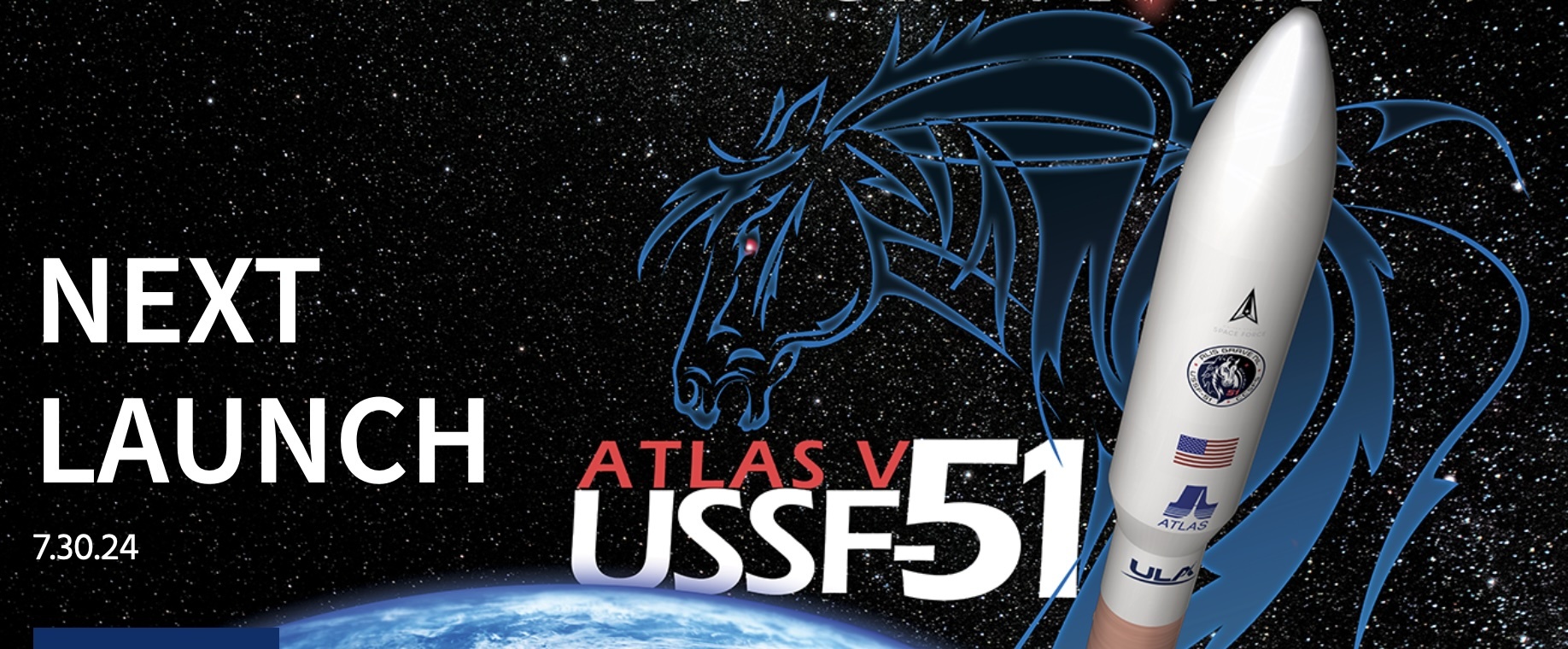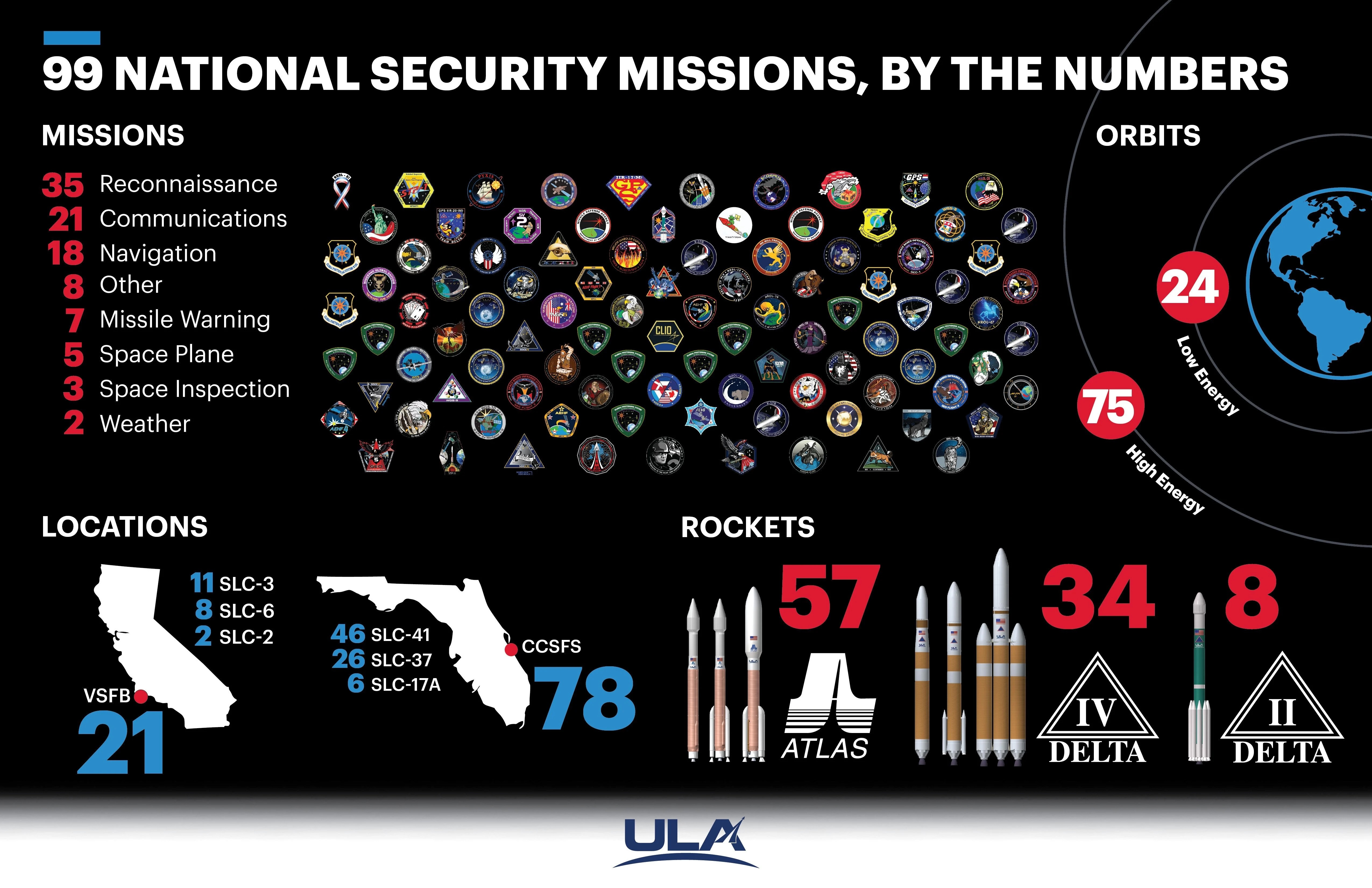United Launch Alliance (ULA) hoists the U.S. Space Force's USSF-51 mission payload atop the Atlas V rocket in the Vertical Integration Facility-G (VIF-G) adjacent to Space Launch Complex-41 at Cape Canaveral Space Force Station. Photo credit: United Launch Alliance
The milestone 100th launch in service to U.S. national security by United Launch Alliance (ULA) is in the final stages of preparations for ascent into space on July 30 from Cape Canaveral Space Force Station (CCSFS) in Florida.
ULA will use an Atlas V 551 rocket to launch the classified USSF-51 mission for the United States Space Force’s Space Systems Command (SSC).
Stacking of the 196-foot-tall (60-meter) rocket began June 25 when the first stage was trucked from ULA's Horizontal Integration Facility (HIF) to the Vertical Integration Facility-G (VIF-G) adjacent to Space Launch Complex (SLC)-41 for hoisting aboard the Mobile Launch Platform.
Powered by refined kerosene propellant, the stage’s main engine will generate 860,200 pounds (3.83 mega-Newtons) of thrust to propel the Atlas V out of the atmosphere during the initial minutes of flight.
The following days were spent installing five GEM 63 solid rocket boosters (SRBs) on the sides of Atlas V. The 66-foot-long (20-m) boosters will be ignited at liftoff to augment the first stage and provide two-thirds of the power at launch, each delivering 371,550 pounds (1.6 mega-Newtons) of thrust for approximately 90 seconds.
The Centaur upper stage was lifted into the VIF and connected to the first stage on July 2. The cryogenic stage's single RL10C-1-1 engine—a new and higher performing variant of the venerable engine family—burns liquid hydrogen and liquid oxygen to produce 23,825 pounds (106 kilo-Newtons) of thrust.
The USSF-51 payload arrived at the VIF on July 17 and was lifted atop the rocket to complete assembly of the launch vehicle. It is encapsulated in a 17.7-foot-diameter (5.4 m) composite payload fairing measuring 68 feet (20.7 m) in height.
This Atlas V rocket, designated AV-101, will weigh 1.29 million pounds (587,000 kg) once fully fueled for liftoff. It leaves the pad on 2.7 million pounds (12 megaNewtons) of thrust.
The Atlas V 551 is the highest performance configuration of the rocket family with a full complement of five solid rocket boosters. It first flew in 2006 and has launched the New Horizons spacecraft to Pluto, the Juno orbiter to Jupiter and multiple national security payloads.
The USSF-51 mission marks the conclusion of national security launches using the Atlas V fleet as ULA transitions to the next generation, highly flexible Vulcan rocket for continued access to space.
Atlas V served the Air Force, Space Force and National Reconnaissance Office for 17 years with 100 percent launch success, accomplishing missions to low-, medium-, transfer and geosynchronous orbits across the entire performance range of the Atlas V configurations.
ULA continues as a steadfast partner to the Space Force, fulfilling the rigorous, unique requirements needed to launch tremendous capabilities safely and successfully into space for our national defense and the protection of the country’s allies around the world. We have delivered 99 national security missions to orbit successfully since the company was created in 2006, representing 62 percent of our flight history, using Atlas V, Delta II and Delta IV rockets.
Our launch record played a key part in the successful recapitalization effort to modernize and upgrade the full breadth of U.S. capabilities in space, advancing communications, overhead surveillance and navigation systems that serve the warfighter in harm’s way.
Space is the new battlefield high ground; a strategic warfighting domain and space launch is a strategic national capability. ULA is unleashing the energy of American ingenuity by developing Vulcan to meet our nation’s need for expanding space missions.
Vulcan incorporates the best of the legacy Atlas and Delta rockets to create one launch solution that is adaptable, affordable and meets the full spectrum of needs demanded by complex national security satellite deployment missions.
United Launch Alliance is preparing for a seminole moment for its Atlas 5 rocket. The launch vehicle is preparing to launch its 58th and final national security mission on Tuesday. The United States Space Force-51 (USSF-51) mission will also be the 100th national security mission launch for ULA.
Following the completion of a launch readiness review on Friday, ULA rolled the rocket to the launch pad at Space Launch Complex 41 (SLC-41) at Cape Canaveral Space Force Station. First motion came shortly after noon on Saturday with the journey wrapping up after 12:30 p.m. EDT.
Liftoff is targeting Tuesday, July 30, during a three-hour window that opens at 6:45 a.m. EDT (1045 UTC).
“This is a bittersweet moment for us. I’ve had the privilege of sitting console for the very first national security Atlas launch in 2007, STP-1 (Space Test Program 1) in March of that year and here we are with our last national security Atlas,” said Col. Jim Horne, Senior Materiel Leader of the Launch Execution Delta. “I do want to say thank you to the entire team, the government and ULA. It’s been a strong partnership over these last almost 20 years on this program and this has been our workhorse vehicle.”
Because of the nature of the launch, Horne declined to go into detail about the mission or if the flight was carrying a single payload or more than one.
“I can’t say much about that his is a very important mission for national security in this time of great power competition, but that’s really all we can say at this time,” Horne said.
The Atlas 5 launching the USSF-51 payload will fly in a 551 configuration, meaning it will be supported by five solid rocket boosters and a 17-foot (5 meter) diameter short payload fairing. The full stack stands about 196 feet (59.7 meters) tall.
Gary Wentz, ULA’s vice president of Government and Commercial Programs, said following this mission, out of the remaining 15 Atlas 5 rockets remaining, nine will fly in the 551 configuration in support of Amazon’s Project Kuiper constellation.
“Every time you fly you learn a lot. And we’re flying five GEM 63’s on this mission,” Wentz said. “So, we’ll learn from that, continue to get data and going forward, we’ll apply that to the subsequent Atlas missions.”
Passing the baton
This final mission as part of the National Security Space Launch (NSSL) for the Atlas 5 rocket marks a pivot point for ULA. Following the USSF-51 launch, ULA will turn its full attention to its second certification flight of its Vulcan rocket following a successful debut in January.
“What we’ll do after this mission flies is we’ll do some checkout of the ground system with the [mobile launch platform], the Atlas MLP, verify all of that’s good, then we’ll bring in the Vulcan launch platform, do checkout of it and immediately go into erection of the booster and prepping for the Cert-2 mission,” Wentz said.
“We won’t waste any time. It’ll be within a week and a half to two weeks we’ll have the hardware in process for the Cert. flight.”
As ground teams at the Cape were preparing to roll out the Atlas 5 rocket, ULA teams in Decatur watched as the barge named ‘RocketShip’ set sail with the third Vulcan booster on board. It will be used for the first NSSL mission a Vulcan rocket launches: USSF-87.
Dr. Walt Lauderdale, the mission director for the USSF-51 mission, said the close working relationship between the U.S. Space Force and ULA during the development of Vulcan. He said that the dozens of missions flown on Atlas are also helping to inform him and his teams as they work through the certification process.
“When we look at working with ULA, that partnership, it’s really having that intimate knowledge and understanding of the vehicle systems, the ground systems, how they interface,” Lauderdale said. “You can do all the modeling in the world, but there’s no replacement for actual, real live data, real data from the vehicle and the system.”
“Cert-1 was a terrific flight. It allowed us to validate a lot of things that we’ve worked with them up to that point and looking to Cert-2 as Col. Horne just said, its gives us an opportunity to take all that we know from the models, all the qualifications, all the testing that we’ve done, and make sure that there’s no surprises,” Lauderdale added. “That’s really what we’re looking for for Cert-2 is to make sure that there’s no surprises and that it’s well bounded by our experience and our qualification knowledge.
“And that really does set the stage for us as we move forward into those Vulcan launches to go forward with confidence. Everything is looking good at this point and we’re not done til we’re done.”
Quelle: SN
+++
ULA makes preparations for Atlas V’s last security mission
CAPE CANAVERAL SPACE FORCE STATION, Fla. — United Launch Alliance (ULA) is making its preparations for its upcoming Atlas V launch at Cape Canaveral Space Force Station, the rocket’s final national security mission.
The USSF-51 mission marks the final national security launch for an Atlas V rocket as ULA transitions to the next generation Vulcan rocket for continued access to space.
Ground crews are gearing up for what they are calling a bittersweet moment.
“This is the final Space Force Atlas V launch and it’s one of the most critical payloads that we’ve put out to date, I’d say,” said Gary Wentz, vice president of ULA’s Government and Commercial Programs.
The Atlas V is the last major variant in the Atlas launch vehicle family. It was first used for the National Security Space Launch (NSSL) program on March 9, 2007.
The history of the Atlas family dates to 1957 with 682 total reported launches.
Because this is a classified mission, there are little details as to what the mission will entail but an official says this mission is very important.
“There are fielding capabilities in space that threaten our ability to operate freely in that domain and provide the critical services that we provide to folks here on Earth, whether that be a position, navigation timing services in the entire world,” said Col. James T. Horne, Senior Materiel Leader at Launch Execution Delta.
Although this is the last from the NSSL program, an additional 15 commercial and non-defense missions, including crewed launches, are planned for the Atlas V. NSSL also anticipates employing the Vulcan system upon completion of the certification process.
“To take all that we know from the model, all of the qualifications, all that testing that we’ve done and make sure there are no surprises, that’s really what we’re looking for in Cert 2 is to make sure there are no surprises. And it’s well bounded by our experiences and qualification knowledge, and that really does set the stage for us as into those Vulcan launces to go forward with confidence everything is looking good at this point, and we’re not done until we’re done,” said Dr. Walt Lauderdale, mission director for USSF-51.
The launch is scheduled for Tuesday, July 30, at 6: 45 a.m. ET, with a three-hour window.
The launch will be livestreamed on ULA’s website at approximately 30 minutes ahead of liftoff.
Quelle: SPECTRUM NEWS 13
+++
ULA prepares for final military launch of Atlas 5 rocket
USSF-51 will be the last national security launch for the Atlas 5 as ULA prepares to complete Vulcan’s certification for Space Force missions
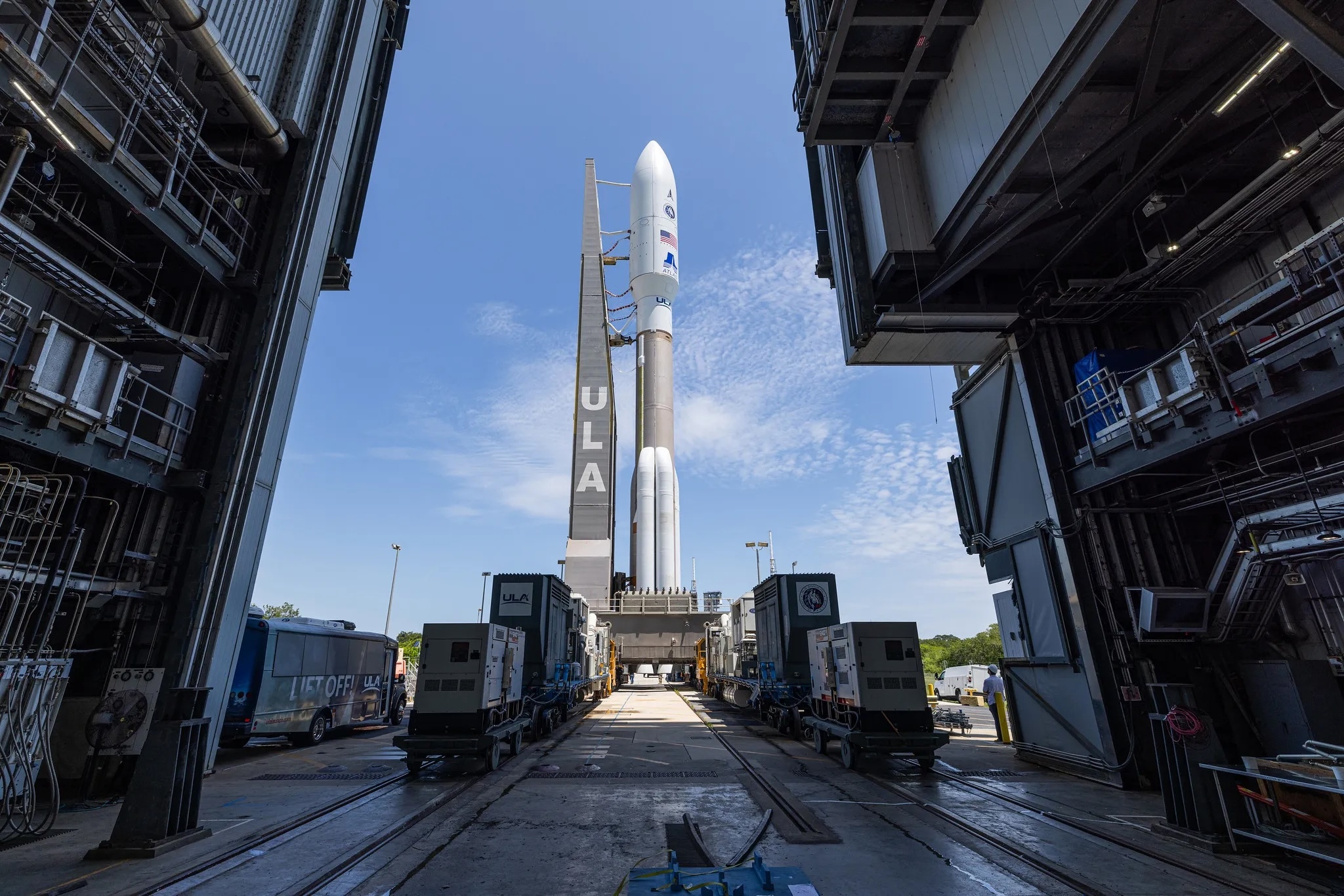
WASHINGTON — United Launch Alliance (ULA) is set to launch its final Atlas 5 rocket for the U.S. military on July 30.
The classified payload, designated USSF-51, is scheduled to lift off at 6:45 a.m. Eastern from Space Launch Complex 41 at Cape Canaveral Space Force Station, bound for geostationary Earth orbit.
This mission will be ULA’s 100th national security launch and the Atlas 5’s 53rd.
USSF-51 also represents the first ULA launch under the National Security Space Launch (NSSL) Phase 2 contract, awarded by the Space Force to ULA and SpaceX in 2020. While SpaceX launched its first Phase 2 mission in January 2023, ULA’s schedule has been disrupted by development issues with its next-generation Vulcan Centaur rocket.
The Vulcan Centaur, designed to replace both the Atlas 5 and Delta 4 rockets, promises increased performance and flexibility for a wide range of missions. However, its development encountered setbacks, pushing its debut launch to January 2024 and delaying its certification for national security missions.
Originally, USSF-51 was slated to fly on Vulcan as part of the Phase 2 contract but the mission was reassigned to the proven Atlas 5.
“Because of the criticality of the spacecraft that we’re putting up. we elected to transition it from Vulcan to Atlas for more schedule certainty.” Gary Wentz, ULA’s vice president of government and commercial programs, told SpaceNews.
While the Atlas 5 is bidding farewell to the NSSL program, its career is far from over. ULA has plans for an additional 16 commercial and non-defense missions, including crewed launches, utilizing the remaining Atlas rockets in its inventory.
As ULA works towards Vulcan’s certification, two NSSL missions are already in various stages of preparation for launches on the new rocket, tentatively scheduled for late 2024, pending the completion of a second Vulcan certification launch scheduled for September.
Transition to Vulcan
Gary Wentz, ULA’s vice president of government and commercial programs, spoke about the planned transition from Atlas 5 to the Vulcan Centaur rocket.
Wentz acknowledged the Space Force’s concerns about Vulcan’s readiness and ULA’s ability to meet the demanding launch schedule required by the Phase 2 contract. “We understand the challenges ahead,” Wentz stated, as ULA has to complete 26 national security launches from the company’s East and West Coast launch pads by the end of fiscal year 2027.
To accommodate national security and commercial launches, ULA plans to increase its launch cadence to twice monthly. Wentz explained, “We’re updating Space Launch Complex 41 to support both Atlas and Vulcan operations,” he said. This dual-capability is crucial for the transition period, he said.
The company’s strategy involves interspersing the remaining Atlas 5 launches with the new Vulcan missions. “We have 16 remaining Atlases to fly, and these will be interwoven with Vulcan flights,” Wentz said. “Our systems are designed to accommodate this flexibility.”
These remaining Atlas 5 rockets are slated to launch satellites for Amazon’s Kuiper broadband constellation and NASA crew missions to the International Space Station.
Looking ahead, Wentz identified USSF-106 and USSF-87 as Vulcan’s first two national security missions. “Over the next couple of years, we’ll work through the backlog on both East and West Coasts for our assigned Phase 2 missions,” he added.
To facilitate this transition, ULA has reconfigured its launch complex with a dual-track system. Wentz elaborated, “This allows us to assemble both Atlas and Vulcan rockets in parallel, sharing the same launch pad. With this setup, we’ll be capable of launching every five to six days as needed.”
Quelle: SN
----
Update: 30.07.2024
.
Start von Atlas-V mit USSF-51 Satelliten
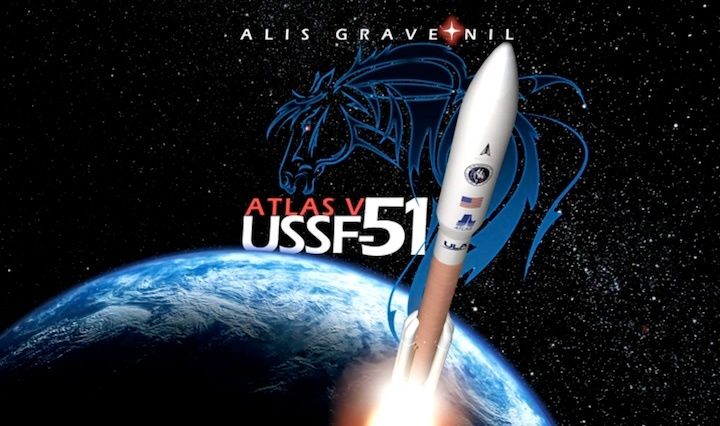
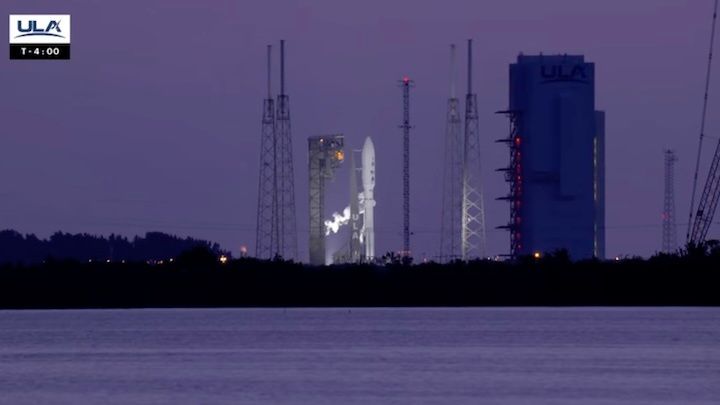
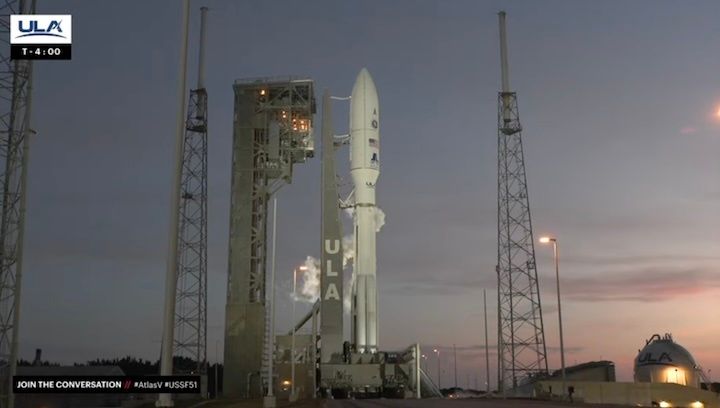
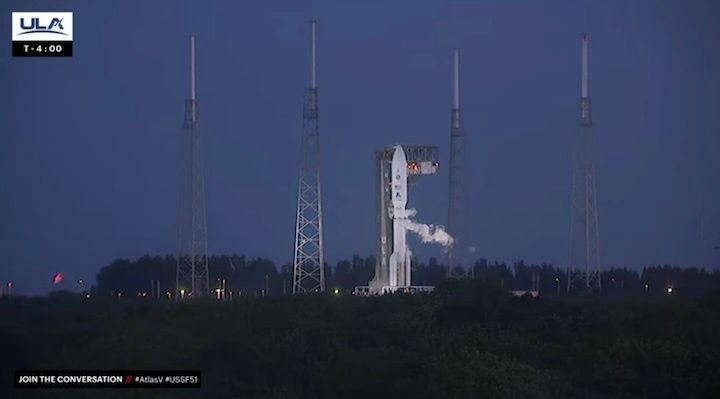
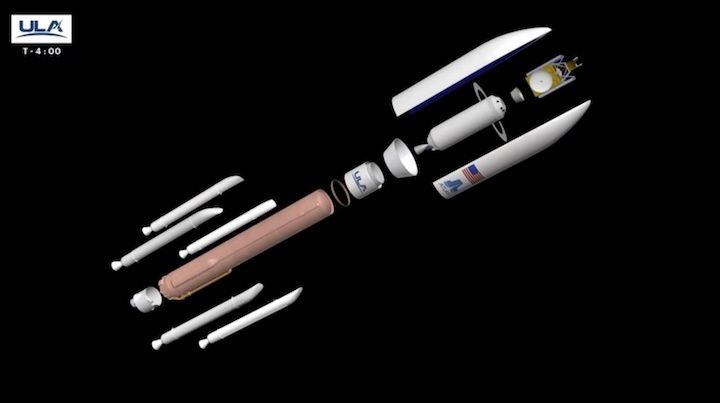
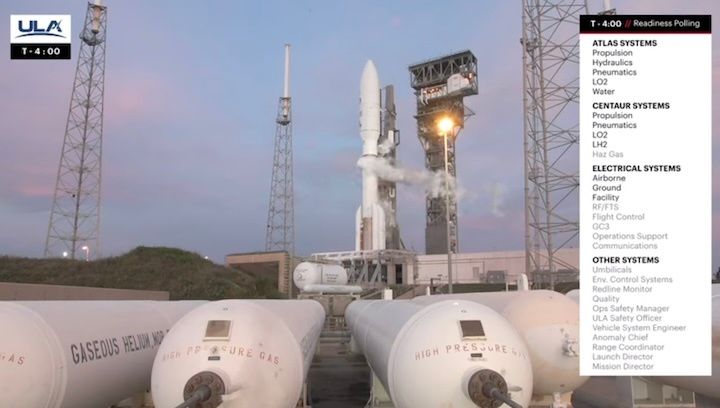
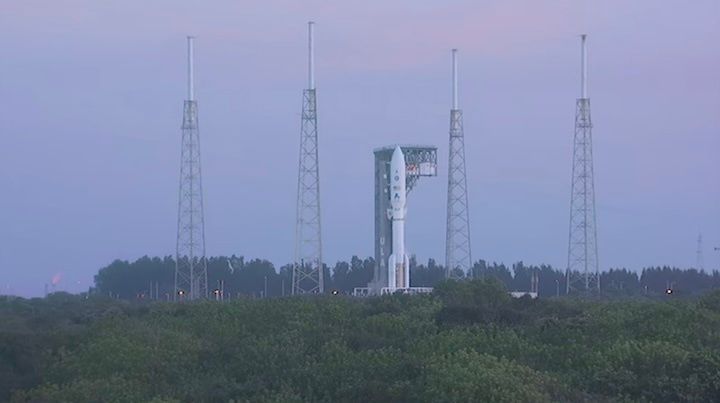
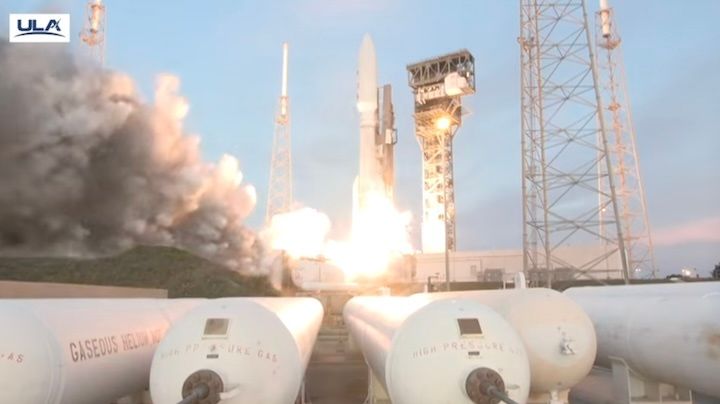
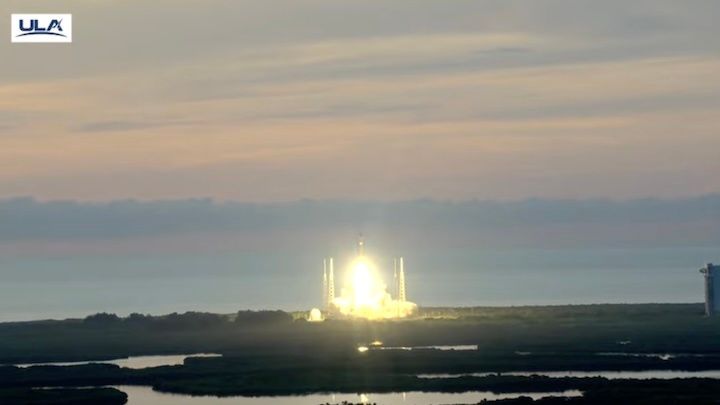
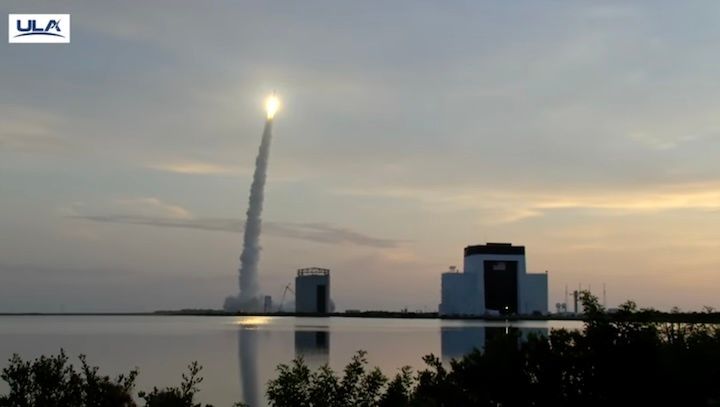
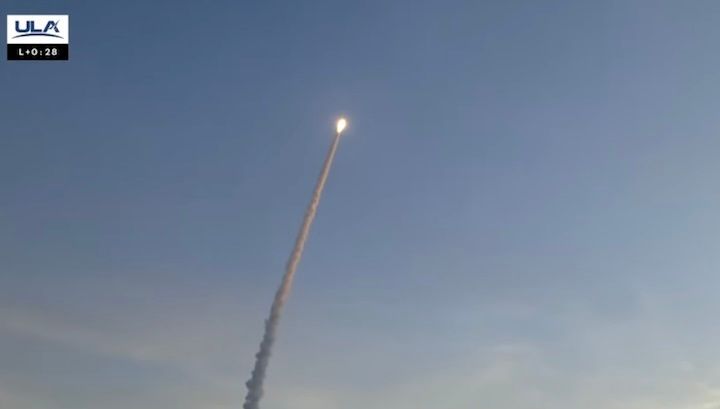
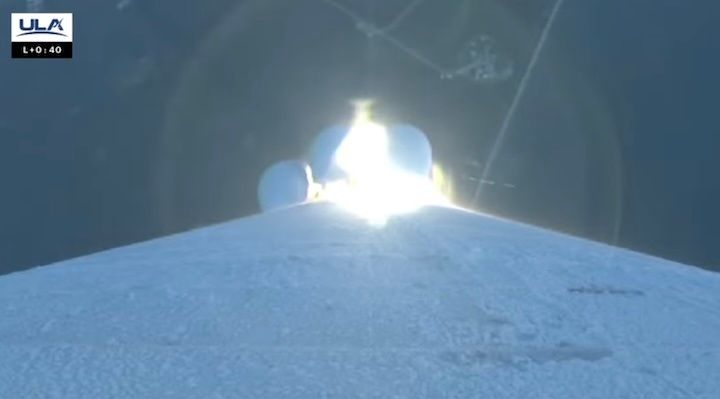
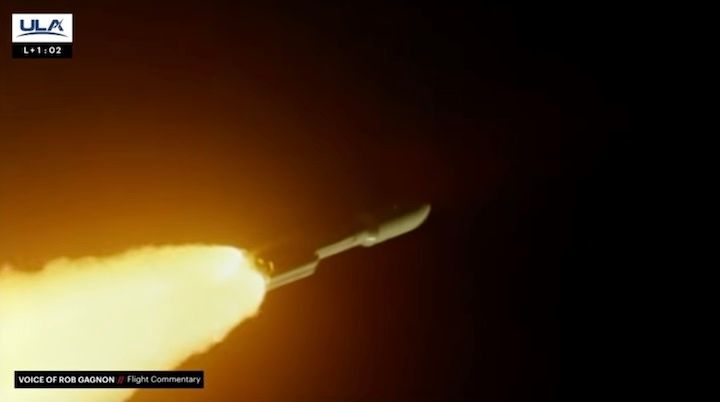
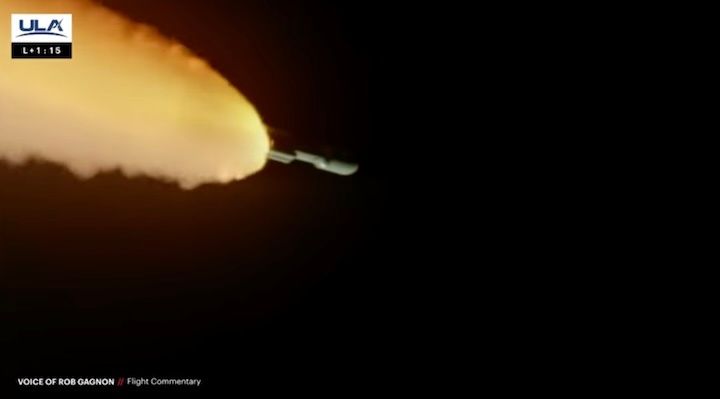
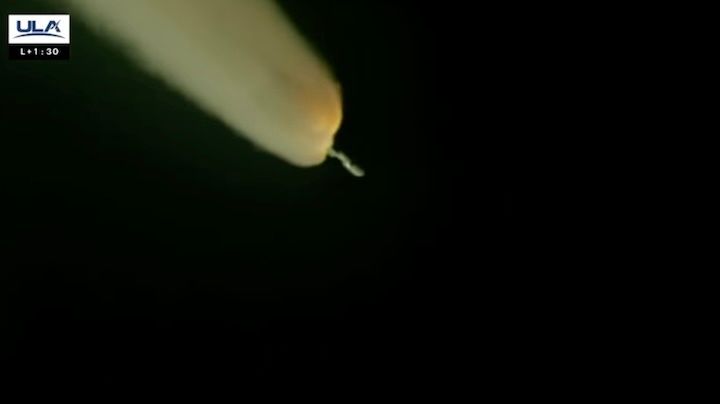
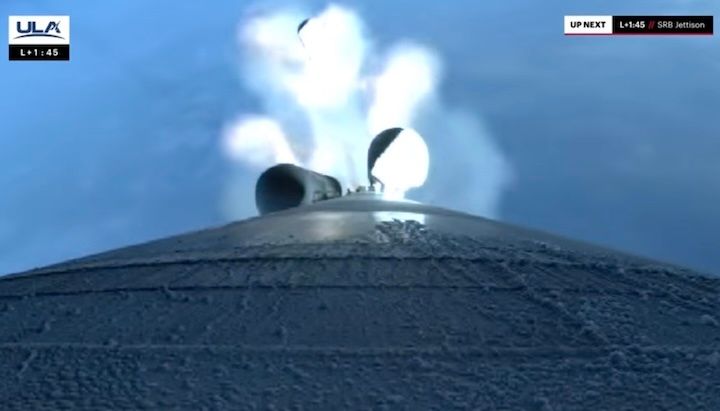
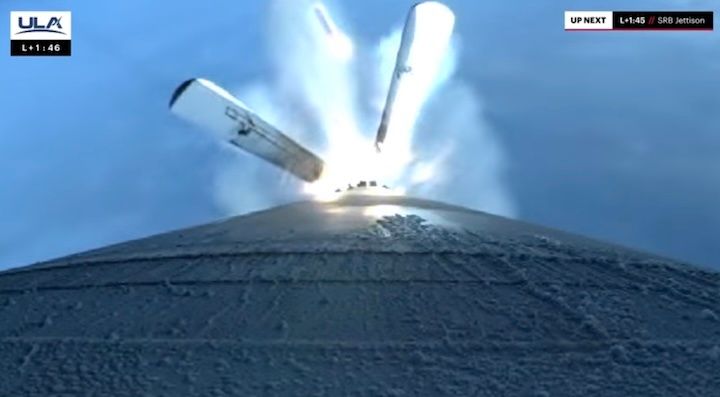
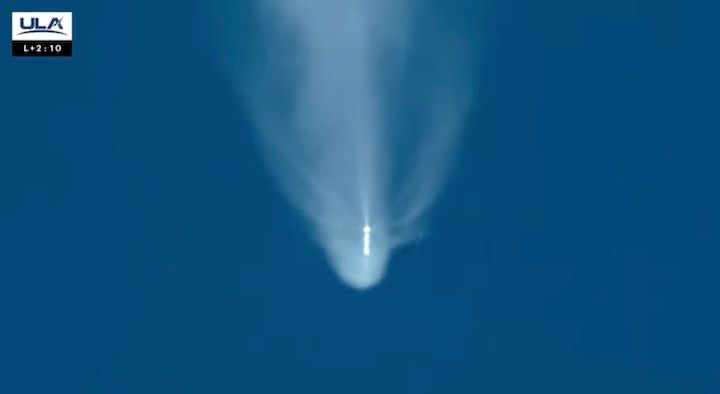
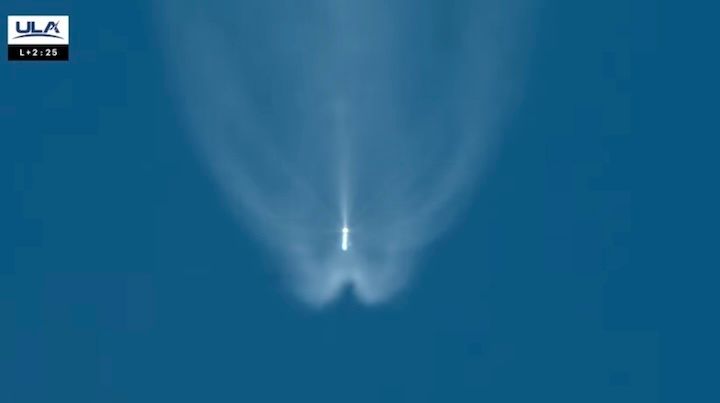
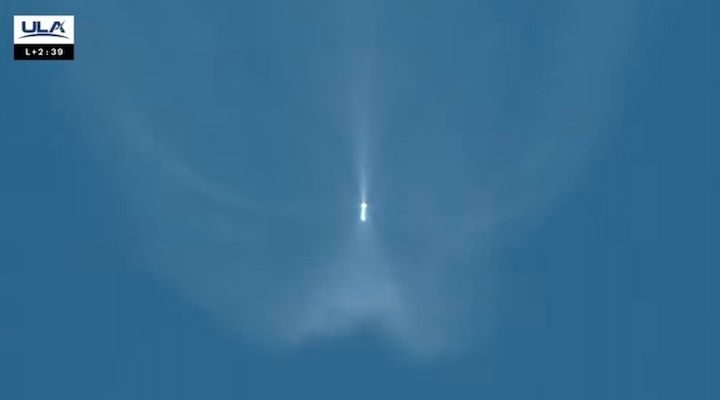
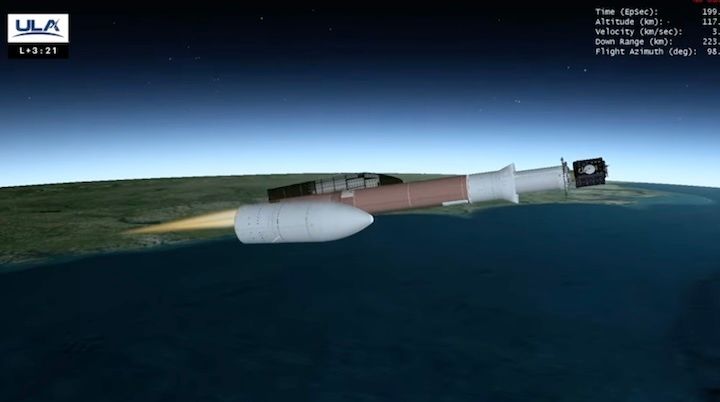
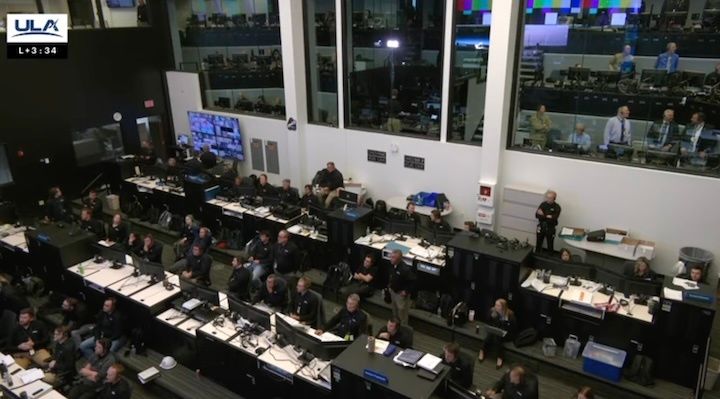

Quelle: ULA
